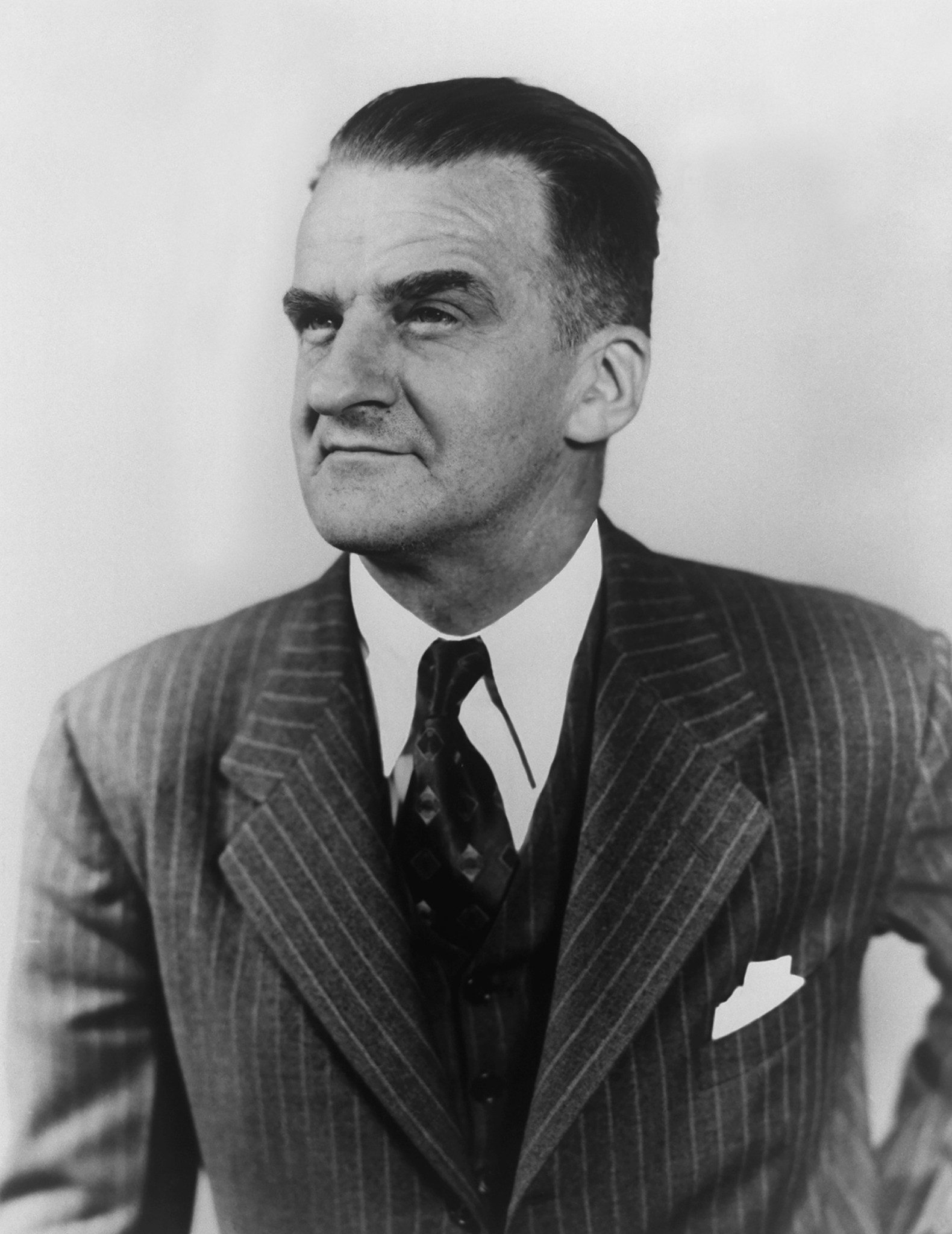Dr. Theodore Theodorsen (1897–1978) was an applied mathematician and theorist who contributed superior fundamental research in the fields of flutter, vibrations, and theoretical aerodynamics.
Dr. Theodorsen was born in Sandefjord, Norway, where he was known for his intellectual brilliance during his teen years. He attended the Norwegian Institute of Technology in Trondheim, where he graduated in 1922 with a master’s degree in mechanical engineering. He became an instructor at the university for two years, after which he decided to emigrate, along with many of his friends, to the United States, because of the lack of engineering jobs in Norway. In fact, only one individual from his graduating class of 31 students remained in Norway.
Settling in Baltimore, Maryland, within two weeks of his arrival he accepted a position as an instructor in mechanical engineering at Johns Hopkins University, where he taught for five years, and earned his doctorate degree in physics. By coincidence, a student in his first class was Mel Gough, who would later become a famous NACA test pilot and head of flight operations at Langley, and the organizer of NASA’s Atlantic Missile Range at Cape Canaveral, Florida, at the start of the space age.
After teaching for five years, Theodorsen casually mentioned to Dr. Joseph Ames, President of Johns Hopkins University — and Chairman of the Executive Committee of the NACA — that he was considering leaving the university to conduct theoretical work at the Bureau of Standards. Ames convinced him to do otherwise and, in 1929, Theodorsen was hired by the NACA as an associate physicist at the Langley Memorial Aeronautical Laboratory. He would become one of the most accomplished theoreticians in the history of Langley.
Theodorsen’s first activities at Langley included an assignment to develop an instrument for detecting buried metals, in response to NACA concerns during the construction of the first Langley towing tank — because the construction area was known to have been used for bombing practice by the Army Air Service. On its first use, Theodorsen’s highly-successful device detected a live bomb.
He was made head of the Physical Research Division, and proceeded to specialize and manage fundamental research on flutter, vibrations, instruments, turbines, propellers, cowling configurations, engine cooling, tunnel-wall interference, the theory of thin airfoils, and many other topics. His most outstanding work was in the field of flutter, in which he was widely acknowledged to be the country’s expert; and in the field of theoretical pressure distributions on airfoils, where his work supplemented the previous contributions of Joukowski and Munk.
He also conducted the first noise research by the NACA, worked on fire prevention in aircraft and on means of icing removal and prevention. He contributed to the theory of open, closed and partially open wind-tunnel test sections; made some of the first measurements of skin friction at transonic and supersonic speeds; and developed the use of Freon for experimental aeroelastic work. During World War II, Theodorsen performed analyses and identified potential solutions to many critical military aircraft problems, including rudder flutter that was a major problem for the fabric-covered rudder of early versions of the P-47 Thunderbolt fighter. His analyses and testing in the Langley 8-Foot High-Speed Tunnel resulted in retrofit of metal-covered P-47 rudders, which solved the problem.
Theodorsen’s driven nature led him into many controversies with other powerful figures at Langley, including Eastman Jacobs, regarding the usefulness of experimental vs. theoretical results for airfoils in the Variable Density Tunnel; and Smith DeFrance, over the design of the open-throat, double-return features of the Full-Scale Tunnel.
His leadership of the Physical Research Division at Langley resulted in construction of several unique facilities. In 1946, he proposed and managed a pressurized wind tunnel for flutter testing that employed a mixture of air and Freon for testing aeroelastic models with lower horsepower requirements. The current-day NASA Langley 16-Foot Transonic Dynamics Tunnel was designed for aeroelastic research based on the same principles. Also in 1946, Theodorsen’s division began operations of the Langley Helicopter Apparatus; an outside, 40-ft high tower used for fundamental studies of the performance, stability and control, and vibration characteristics of helicopter rotor systems.
He left the NACA in 1946 to organize and administer the Instituto Tecnológico de Aeronáutica (Aeronautical Institute of Technology) in Brazil. In 1950, he returned to the United States and served as Chief Scientist for the U.S. Air Force from 1950 to 1954, conducting fundamental research on the structure of turbulence. Theodorsen then became the Chief of Research for the Republic Aviation Corporation; retiring in 1962 to become an active consultant to the United Aircraft Corporation, where he specialized in ducted-propeller work and helicopter rotors.
At the end of his career, he also found time to ponder Einstein’s theory of relativity and published a notable paper on his findings.
In 1976, Dr. Theodorsen was awarded an honorary doctorate degree from the Norwegian University of Science and Technology in Trondheim.
Theodorsen married Johanne Magdelene Hoem, in Trondheim, Norway, in 1922, before coming to the United States. Their daughter, Muriel Gerd-Preutz, and sons, Theodore Elliott and John Willman, were all born in the United States.
Dr. Theodorsen died on November 5, 1978, at the age of 81 at his home in Centerport, Long Island, New York.



























